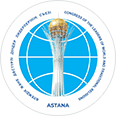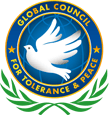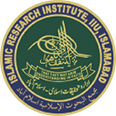Brief Description
The Mausoleum of Khoja Ahmed Yasawi in Turkistan is one of the greatest monuments of Islamic architecture in Central Asia and a spiritual symbol of Kazakhstan. It was built at the end of the 14th century by order of Emir Timur (Tamerlane) on the burial site of Ahmed Yasawi – a prominent Sufi poet, philosopher, and preacher who had a profound influence on the spiritual culture of the Turkic peoples. Architecturally, the mausoleum is an outstanding example of the Timurid style. The complex is made of fired brick and decorated with ceramic tiles featuring intricate ornaments and inscriptions. Its dimensions are impressive: the height of the main portal reaches 38 meters, and the dome, with a diameter of 18.2 meters, is considered one of the largest brick domes in Central Asia. The total area of the complex is about 4,600 square meters. Inside the mausoleum, there are 35 rooms, including a hall for worship (Kazandyk), a library, a mosque, and cells for Sufis. The central hall is adorned with a huge copper cauldron (kazandyk) weighing more than 2 tons, used to prepare food for pilgrims.
Location
The Mausoleum of Khoja Ahmed Yasawi is located in the city of Turkistan in southern Kazakhstan, in the Turkistan region. This ancient city, formerly known as Yasy, lies approximately 160 kilometers west of Shymkent and about 600 kilometers from Almaty.
Historical Background
Ahmed Yasawi was the founder of the Yasawiya Sufi order and the author of the famous work Divan-i Hikmet (“Book of Wisdom”), in which he presented mystical Islamic ideas in simple and vivid language. His sermons and poetry shaped the spiritual image of society, promoting humility, compassion, and faithfulness. After his death, his grave became a revered place, and the construction of a grand mausoleum gave the site the status of the main shrine of the region.
There are many legends associated with the mausoleum. According to one of them, Timur intended to build an even more magnificent structure, but construction kept failing: the walls cracked, and the scaffolding collapsed. Then, Timur saw the saint himself, Ahmed Yasawi, in a dream, who told him that his resting place should be modest. After that, construction was halted, and the mausoleum remained in its current, “unfinished” form. Other legends tell of the miraculous power of the great cauldron in the Kazandyk hall — the water and food prepared in it were believed to have healing properties. It was also said that the saint himself protects Turkistan and the surrounding land from wars and disasters.
Religious Significance
The religious importance of the Mausoleum of Khoja Ahmed Yasawi cannot be overstated. For Muslims of Central Asia, it is one of the main spiritual centers, linking generations of believers with the legacy of the great Sufi sheikh. Living in the 12th century, Ahmed Yasawi was not only a preacher of Islam but also a spiritual teacher whose doctrine combined the mystical depth of Sufism with closeness to folk culture. His Divan-i Hikmet became a source of moral and spiritual education for millions of people.
After Yasawi’s death, his tomb turned into a place of veneration and pilgrimage. People believed that prayer at his grave brought relief, healing, and spiritual strength. A popular saying claimed that three pilgrimages to Turkistan equaled one Hajj to Mecca. Thus, the mausoleum became a kind of “sacred road” for those who could not make the long journey to the Hijaz.
The mausoleum also became a school of spiritual education: for centuries, Sufis lived and studied there, continuing the teachings of their mentor. The place served as a center for preserving and transmitting Sufi traditions, shaping the unique spiritual atmosphere of the region.
A special shrine of the mausoleum is the huge copper cauldron in the Kazandyk hall. According to legend, food and water prepared in it were blessed and possessed healing powers. Pilgrims considered touching the cauldron and partaking in the meal an act of spiritual purification.
To this day, the mausoleum retains its status as a sacred site. Muslims from all over Kazakhstan and neighboring countries come here to honor the saint’s memory, offer prayers, and ask for health, well-being, and spiritual strength. For many believers, visiting the mausoleum is not just a pilgrimage but a deep inner experience that strengthens their faith and spiritual connection with the history of Islam in Turkic lands.
Cultural and Tourist Significance
The cultural and tourist significance of the Mausoleum of Khoja Ahmed Yasawi extends far beyond Kazakhstan. It is not only an outstanding monument of medieval architecture but also one of the main symbols of spiritual unity in the Turkic world. For centuries, the mausoleum has been a center of pilgrimage – it was believed that three visits to Turkistan equaled one Hajj to Mecca. Thus, the mausoleum became an accessible holy site for those unable to make the long journey to the Hijaz.
The cultural value of the mausoleum lies in its preservation of both the architectural traditions of the Timurid period and the spirit of Sufism, based on the ideals of humility, compassion, and spiritual self-improvement. The place served as a school for Sufis, a center of enlightenment and knowledge transmission, influencing the religious and cultural identity of many generations.
Today, the mausoleum is part of the historical and cultural reserve Azret Sultan and is included in the UNESCO World Heritage List. This makes it not only a spiritual but also an international cultural site. Turkistan has become one of the main tourist destinations in Kazakhstan, attracting not only pilgrims but also researchers, historians, and travelers from around the world.
For tourists, the mausoleum offers a unique opportunity to touch living history and see a majestic 14th-century architectural monument in nearly its original form. Its grand portals, ornate tilework, massive copper cauldron in the Kazandyk hall, and sacred atmosphere create an unforgettable impression. The site’s myths and legends further enhance its tourist appeal, giving visitors a sense of connection with the ancient traditions of the past.
Current State
The current state of the mausoleum reflects its unique value. In 2003, it was inscribed on the UNESCO World Heritage List as an outstanding monument of architecture and spiritual heritage. Today, the mausoleum is under state protection, with regular restoration and conservation work carried out. Around it, the modern historical and cultural complex Azret Sultan has been developed, including archaeological monuments, mosques, and mausoleums. Turkistan has become a center of pilgrimage and one of Kazakhstan’s most important tourist destinations – every year, hundreds of thousands of believers and visitors come to the mausoleum.


















